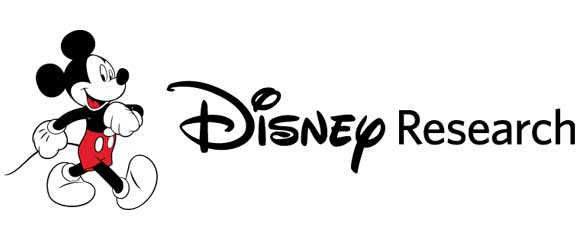
MobiOpp 2012 at ETH Zurich
MobiOpp 2012 will be held in GEP Pavillon adjacent to the classical main building of ETH, which was built between 1853 and 1864 by the famous architect (and ETH professor) Gottfried Semper, who also built the Dresden Opera House.
 |
 |
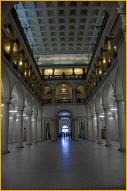 |
Travel Directions
To get from Zurich Airport to the ETH or hotels close by,
the best option is to take the streetcar (TRAM) number 10 and leave the tram at
the stop "ETH/Universitätsspital".
This takes approx 30 minutes.
Alternatively,
you can take a train from the airport to Zurich main station (Zürich HB) which takes around 10 minutes, and then walk from there or take a streetcar.
Streetcar from airport is most simple if you have luggage. Either option will cost 6.20 CHF one way.
For detailed public transportation schedules,
please see here.
Details
Train When you arrive at the airport follow the "Bahn/Train" signs which will take you to the bottom floor. Take any train that goes to the Zurich main station, Hauptbahnhof (HB) in German, which is a ten minute ride. From Zurich HB, you can take the tram number 10 from "Bahnhofplatz" (the big square in front of the main station) or the tram number 6 from Bahnhofstrasse. In both cases, exit at "ETH/Universitatsspital" (the 3rd stop). The ETH main building is located adjacent to the tram stop.
Tram Alternatively a light rail connection "Glattalbahn" (physically the same as a tram, also circulates as tram line number 10) runs from the airport directly to ETH, without the need to change. Trip time is about 28 minutes. Follow the "Tramway" signs, board on the platform outside the airport on departure level, and leave the tram at the stop "ETH/Universitätsspital" (right in front of the ETH main building). From ETH to the airport, take tram line number 10 with the destination "airport" (with an airplane icon; note that some trains don't go all the way to the airport). There are typically 4 airport connections per hour.
Taxi You can also take a taxi (approx. 100 Swiss Francs) to "ETH Hauptgebaude, Ramistrasse 101", which, though, might take longer than public transport as the traffic to and from airport is usually subject to strong congestion. We recommend against taxi. Switzerland has perfectly fine public transportation.
Tickets When using public transport, please remember to purchase a ticket before boarding. Tickets are available from vending machines in the halls of train stations or at bus and tram stops. Instructions about how to use the ticket machines can be found here.
Map of venue and nearby hotels
View MobiOpp 2012 Venue location and nearby hotels in a larger map
Please note: The location of the venue (the GEP Pavillon) is wrongly labelled on Google maps. It's actually a little bit to the west from the label. Please check here the location of the MobiOpp 2012 Venue.
You can download a PDF version of these directions here.
Visa information for Switzerland
If you require a visa to visit Switzerland have a look here:
The MobiOpp organizers do not endorse or take responsibility for any particular visa service.
If you require a formal invitation letter for your visa application, please contact the General Chair, Prof. Bernhard Plattner, and provide a completed identification template.
Local Information
"Zurich, Downtown Switzerland"
Even though this is a slogan created by Zurich Tourism,
there is some truth in it. Zurich is the economic capital of
Switzerland. With a population of merely some 400'000 people
within the community borders, Zurich is the heart of an economic
area that encompasses some 1.5 Million people, even reaching
into southern Germany, from where many day commuters cross over
the border for their daily work. Zurich is well-known for its
financial industry, with all its implications. Note, however,
that the legendary anonymous bank accounts that are only
identified by a number have disappeared long ago - you meet them
only in movies, nowadays.
Zurich is also beloved for its
splendid location beneath the lake and its hills, and the
quality of life it provides to its citizens. They sometimes
think that traffic created by commuters is severe, but two
Indian students who recently spent 6 months at ETH found that
there is not traffic at all in the city. The truth lies
somewhere between, I think.
For more information, see
also the Wikipedia article about Zurich.
Some visual impressions
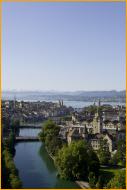 |
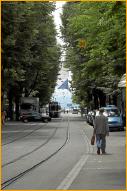 |
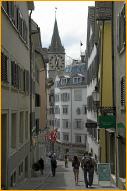 |
 |
 |
 |
 |
 |
 |
 |
 |
 |
Education and Research
Of course, Zurich is also known for its world class technical
university, ETH Zurich. ETH currently has some 14'000 students, of
which more than 3200 are doctoral students. This figure highlights the
importance of research at ETH. Teaching and research is carried out in
16 departments, spanning from architecture and civil engineering,
mechanical and electrical engineering, and computer science to natural
sciences, mathematics, physics, management and social sciences. ETH
Zurich has been consistently ranked first on the European continent
(fluctuating around rank 25 among the world's universities). So far,
21 Nobel laureates were associated with ETH Zurich, among them also
Albert Einstein.
ETH Zurich is owned by the Swiss
Confederation, just like its smaller sister, EPF Lausanne
(EPFL).
Zurich also hosts the University of Zurich, a
university covering all areas of arts and science, with some 24'000
students.
Both ETH Zurich and the University of Zurich are
located in the city's centre, and each have a second campus located a
few kilometers north-west of the center.
Just a few kilometers
to the south-east is the location of the IBM Zurich Research
Lab. There are many links between this lab and ETH Zurich; the most
recent one is the establishment of a new nanotechnology laboratory in
June 2009, as a joint venture of IBM and ETH.
Text by Bernhard Plattner & Xenofontas Dimitropoulos. Photos Copyright Zurich Tourism and Bernhard Plattner.


